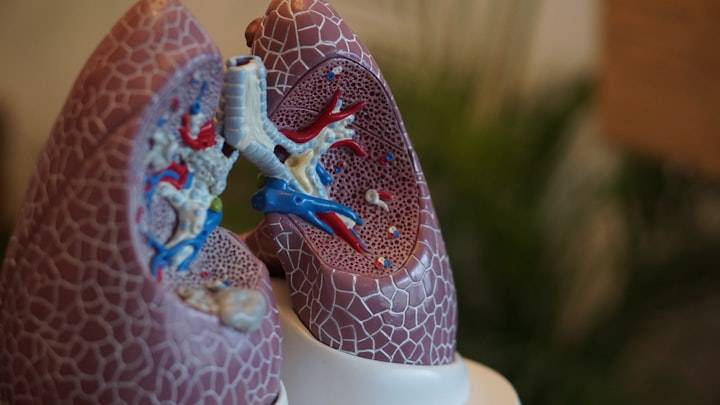Why Lungs Get Destroyed and Their Treatment: A Comprehensive Overview**
The lungs are essential organs responsible for oxygenating the blood and removing carbon dioxide, playing a key role in maintaining life. Unfortunately, various factors—both internal and external—can damage lung tissue, impairing their function and leading to severe health complications. Understanding why lungs get destroyed and how we can treat or manage lung damage is critical in modern medicine.
### **Why Lungs Get Destroyed**
1. **Chronic Obstructive Pulmonary Disease (COPD):**
COPD is one of the leading causes of lung damage globally, resulting from long-term exposure to irritating gases or particulate matter, most often from cigarette smoke. COPD is a blanket term used for conditions like emphysema and chronic bronchitis, where airflow obstruction makes breathing difficult. In emphysema, the air sacs (alveoli) are damaged, reducing the surface area for gas exchange. In chronic bronchitis, the lining of the bronchial tubes becomes inflamed, narrowing the airways.
2. **Smoking and Air Pollution:**
Smoking is the most common cause of lung damage, leading to a multitude of problems such as COPD, lung cancer, and emphysema. The harmful chemicals in cigarette smoke destroy lung tissue, cause inflammation, and trigger abnormal cell growth, which can ultimately lead to cancer. Air pollution—whether from industrial emissions, vehicles, or household pollutants like smoke from cooking fires—is another major contributor to lung destruction. Fine particulate matter (PM2.5) penetrates deep into the lungs, causing inflammation, fibrosis (scarring), and lung diseases.
3. **Lung Infections:**
Recurrent or severe lung infections like pneumonia, tuberculosis, or bronchitis can also damage lung tissue over time. Pneumonia inflames the alveoli, filling them with pus or fluid, hindering their ability to exchange gases. Tuberculosis (TB), caused by the bacterium *Mycobacterium tuberculosis*, results in chronic inflammation and scarring of lung tissue, severely compromising lung function.
4. **Pulmonary Fibrosis:**
Pulmonary fibrosis is a condition where lung tissue becomes scarred and stiff, making it harder for oxygen to pass into the bloodstream. It can result from long-term exposure to toxic substances (such as asbestos or silica dust), radiation therapy, certain medications, or autoimmune diseases. In many cases, however, the cause remains unknown (idiopathic pulmonary fibrosis), making treatment challenging.
5. **Lung Cancer:**
Lung cancer is a major cause of lung destruction, leading to a substantial loss of lung function as tumours grow and obstruct airflow or invade nearby structures. Smoking, exposure to radon gas, asbestos, and other carcinogens significantly increase the risk of lung cancer. Early diagnosis is crucial, but many cases are detected late, which complicates treatment.
6. **Autoimmune Diseases:**
Autoimmune diseases such as rheumatoid arthritis, lupus, and sarcoids is can lead to lung damage. In these conditions, the body's immune system mistakenly attacks its own tissues, including the lungs, leading to chronic inflammation and scarring.
7. **Genetic Factors:**
Some lung diseases are inherited, such as alpha-1 antitrypsin deficiency, a genetic disorder that leads to the early development of emphysema, even in non-smokers. Cystic fibrosis is another inherited disease that leads to the buildup of thick, sticky mucus in the lungs, causing frequent infections and progressive lung damage.
### **Treatment of Lung Damage**
Treatment for lung damage varies depending on the underlying cause, but the goal is generally to improve lung function, manage symptoms, and prevent further damage. While some lung conditions can be managed, severe damage may be irreversible, making prevention and early intervention key.
1. **Smoking Cessation and Pollution Control:**
For individuals with lung damage due to smoking or environmental exposure, the first step is to eliminate the source of harm. Smoking cessation is paramount, as continued smoking will further destroy lung tissue. Reducing exposure to air pollution, either by wearing protective masks in polluted areas or using air purifiers indoors, is also essential.
2. **Medications:**
Medications play a vital role in managing lung disease. For COPD and asthma, bronchodilators and corticosteroids are commonly used to relax the muscles around the airways and reduce inflammation, making breathing easier. Infections like pneumonia are treated with antibiotics or antivirals, while antifungal medications are used for fungal lung infections. For autoimmune-related lung diseases, immunosuppressants or corticosteroids are prescribed to reduce the immune response and prevent further lung damage.
3. **Oxygen Therapy:**
As lung function deteriorates, oxygen levels in the blood can drop, leading to hypoxia (oxygen deficiency). Oxygen therapy provides supplemental oxygen to individuals with chronic lung disease, helping them breathe more easily and improve their quality of life. Long-term oxygen therapy is often used in conditions like COPD and pulmonary fibrosis.
4. **Pulmonary Rehabilitation:**
Pulmonary rehabilitation programs combine exercise training, nutritional advice, and education to help people with chronic lung diseases. These programs improve overall lung function, reduce symptoms, and enhance a person’s ability to perform daily activities. The physical exercises are designed to strengthen the muscles used for breathing and improve stamina.
5. **Surgical Interventions:**
In severe cases of lung damage, surgery may be required. For localized lung cancer, surgeons may remove a portion of the lung (lobectomy), or in extreme cases, an entire lung (pneumonectomy). Lung volume reduction surgery is sometimes performed in patients with severe emphysema to remove damaged lung tissue, allowing healthier parts of the lung to function more effectively. In the case of advanced lung disease where other treatments have failed, a lung transplant may be the only option.
6. **Stem Cell Therapy and Regenerative Medicine:**
Experimental treatments, such as stem cell therapy, aim to regenerate damaged lung tissue. Though this field is still in its infancy, early research suggests that stem cells may help repair injured lungs and restore some function. However, more studies are needed to confirm the safety and efficacy of such treatments.
### **Prevention: The Best Medicine**
While treatments for lung damage exist, prevention remains the most effective strategy. Reducing exposure to tobacco smoke, air pollution, and harmful chemicals is essential. Vaccinations, such as the flu vaccine and pneumococcal vaccine, can prevent respiratory infections that may cause lung damage. A healthy lifestyle, including regular exercise and a balanced diet, also promotes lung health and overall well-being.


